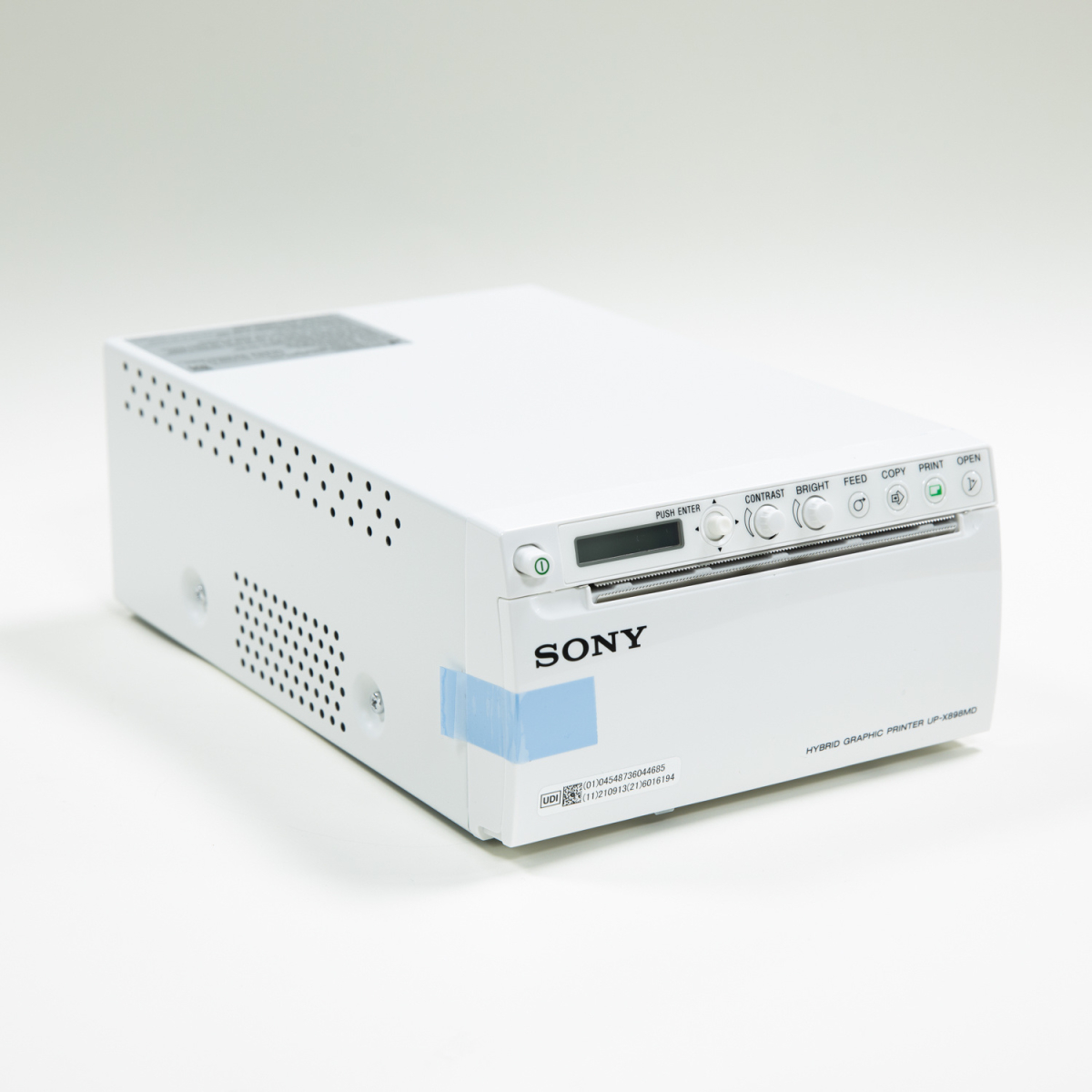The Sony Ultrasound Printer is a compact and sophisticated medical imaging device designed to produce high-quality prints of ultrasound images. With its advanced printing technology and user-friendly features, the Sony Ultrasound Printer plays a crucial role in the field of medical imaging by providing a tangible and permanent representation of diagnostic findings.
Key Features and Functionality:
1. Image Quality: The Sony Ultrasound Printer is engineered to deliver exceptional image quality. It uses advanced printing technology to reproduce ultrasound images with high resolution, ensuring that fine details and anatomical structures are accurately represented on paper.
2. Compatibility: The printer is designed to seamlessly integrate with various ultrasound systems from different manufacturers. It can receive image data via standard interfaces, making it a versatile option for printing images from different modalities and devices.
3. Printing Speed: The printer offers efficient printing capabilities, allowing healthcare professionals to obtain high-quality prints quickly. This is particularly important in busy clinical settings where rapid access to images is essential for diagnosis and patient care.
4. Portability: Many models of the Sony Ultrasound Printer are compact and lightweight, making them suitable for point-of-care applications. This portability ensures that ultrasound images can be easily printed at the patient’s bedside or in different clinical environments.
5. User-Friendly Interface: The printer features an intuitive user interface that simplifies operation. Users can easily navigate through menu options, select image parameters, and initiate printing with minimal effort.
Clinical Applications:
The Sony Ultrasound Printer serves a wide range of clinical applications:
1. Documentation and Reporting: Printed ultrasound images play a crucial role in documenting diagnostic findings and treatment plans. Physicians can annotate images, highlight specific areas of interest, and include them in patient records for reference and communication.
2. Patient Communication: Printed ultrasound images are valuable tools for patient education. Physicians can use these prints to explain medical conditions, treatment options, and surgical procedures to patients and their families in a tangible and understandable format.
3. Medical Records: Hard-copy prints of ultrasound images can be integrated into patients’ medical records, ensuring a comprehensive and permanent record of diagnostic findings. These prints can be invaluable for future reference and comparisons.
4. Telemedicine and Consultations: When seeking expert opinions or participating in telemedicine consultations, printed ultrasound images can be shared with remote specialists for review and guidance.
Maintenance and Quality Assurance:
Maintaining the Sony Ultrasound Printer’s performance and print quality requires regular maintenance. Routine servicing, such as cleaning printheads and replacing paper and ink cartridges, is essential to ensure consistent image output. Quality assurance checks, such as periodic calibration, help verify that the printer is producing accurate and reliable prints.
Conclusion:
The Sony Ultrasound Printer is an essential component in the field of medical imaging, providing healthcare professionals with a tangible and permanent representation of diagnostic ultrasound findings. Its ability to produce high-quality prints of ultrasound images supports documentation, communication, patient education, and accurate record-keeping. With its compatibility, user-friendly interface, and compact design, the Sony Ultrasound Printer contributes to the efficiency and effectiveness of medical imaging practices, enhancing patient care and facilitating informed medical decision-making.






